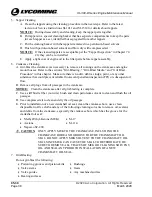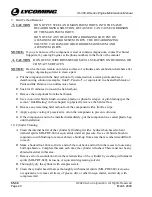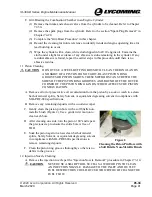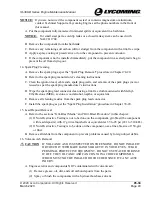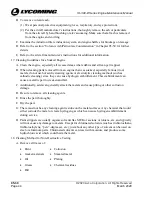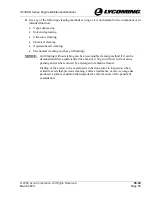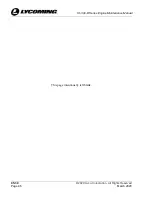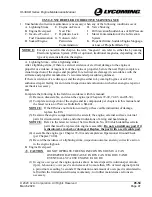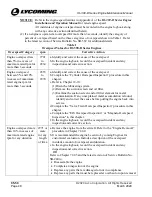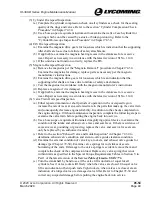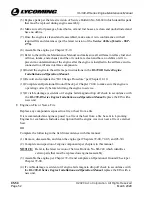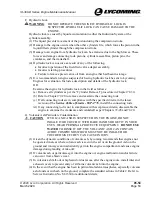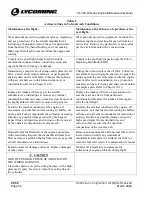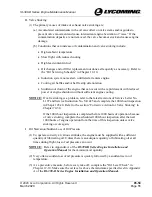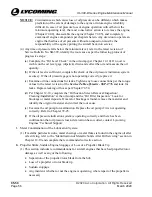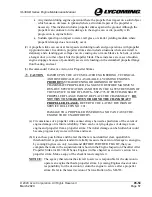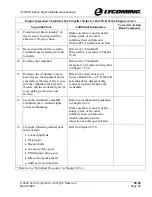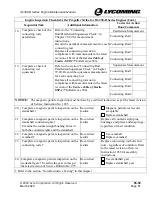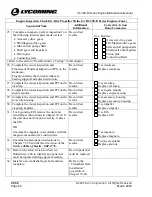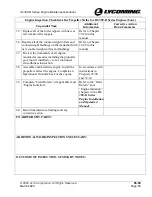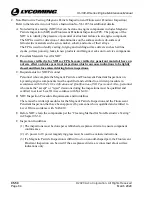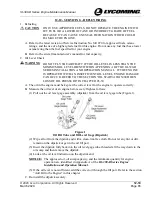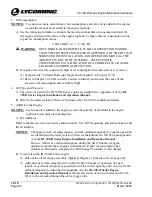
IO-390-D Series Engine Maintenance Manual
© 2020 Avco Corporation. All Rights Reserved
05-50
March 2020
Page 51
IO-390-D Series Engine Maintenance Manual
3
During inspection of engine components, carefully look for signs of detonation
such as tuliped intake valves, burnt pistons, and damage to: crank pins, main
bearings, counterweights, and drive train components, and other conditions that
can cause engine failure.
NOTICE:
Refer to the latest revision of Service Bulletin No. SB-240 which
identifies certain parts that must be replaced on engine reassembly.
4
Assemble the engine per Chapter 72-10 and complete an Operational Ground
Check per Chapter 72-00.
D.
Soaked Engine
CAUTION
WHEN AN ENGINE HAS BEEN SOAKED IN WATER, MOISTURE AND
UNWANTED MATERIALS CAN CAUSE DAMAGE TO ALL SYSTEMS
OF THE ENGINE. DO NOT INSTALL OR OPERATE AN ENGINE THAT
HAS BEEN SOAKED OR IMMERSED IN WATER OR OTHER FLUID
UNTIL IT HAS BEEN DISASSEMBLED, CLEANED, EXAMINED AS
NEEDED, ASSEMBLED, AND OPERATIONALLY TESTED TO ENSURE
THE ENGINE CAN BE SAFELY PUT BACK INTO SERVICE.
NOTICE:
The composition of the substance that the engine has been exposed to can affect
the type and extent of the damage.
It is recommended the engine be sent to Lycoming Engines for evaluation. Include a
description of the liquid in which the engine was soaked.
OR
NOTICE:
The following inspection only applies to an engine soaked in water.
If the engine is soaked in a substance other than water, contact Lycoming
Engines technical support at the phone number listed in the front of this manual.
Complete the following in the field in accordance with this manual.
(1)
Refer to the latest revision of Service Bulletin No. SB-357 for additional details.
(2)
Remove and disassemble the engine (per Chapters 72-00 and 72-05).
(3)
Clean the engine, especially all recessed areas where debris or silt can get trapped.
Remove all debris and silt per the section “Cleaning Guidelines for a Soaked Engine” in
Chapter 05-30.
(4)
Complete an inspection of engine components per chapters in this manual.
(a)
Examine components for visible corrosion or rust (or evidence thereof) per Chapters
72-20 and 72-30. Where possible, remove any rust or corrosion.
(b)
Look for pitting on the cylinder and piston. If pitting is found, replace the component.
Do not re-install a pitted cylinder or pitted piston.
(c)
Visually examine components for embedded silt or debris contamination on bearing
surfaces, pistons, mounting flanges, or on any porous surfaces. Remove all silt and
debris from the component. If the embedded silt or debris cannot be removed, replace
the component.


